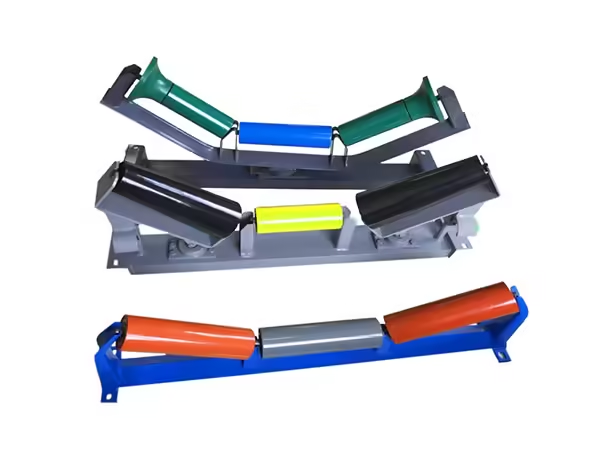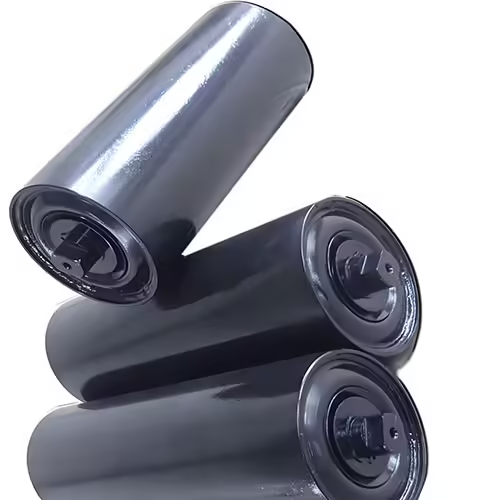Table of Contents
Introduction

In modern manufacturing, efficiency, precision, and safety are key factors that determine a company’s competitiveness. One piece of equipment that has transformed production processes across multiple industries is the Automatic Tube Cutting Machine. These machines are widely used in logistics, mining, construction, and port operations to produce accurately cut tubes with minimal labor input.
Automatic tube cutting machines, such as the servo-driven models CNQ160 and CNQ220, offer advanced features that significantly improve workflow. They utilize PLC human-machine interface systems, allowing operators to input data for automatic tube length, feeding, and cutting. With servo motors, ball screws, and linear guides working together, these machines achieve high precision while maintaining consistent cutting quality. If you are involved in industrial production, understanding the benefits of these machines can help you optimize your operations.
Why Automatic Tube Cutting Machines Are Essential in Industry
Using an automatic tube cutting machine provides multiple advantages over manual or semi-automatic methods. Precision, speed, and safety are the most notable benefits:
- High Accuracy: Servo-driven feeding ensures each tube is cut to the exact specified length, reducing material waste.
- Fast Cutting Speed: Rotating tool mechanisms allow tubes to remain stationary while the cutting tool rotates, resulting in smooth edges and minimal burrs.
- Low Labor Intensity: Automated feeding and cutting reduce manual handling, lowering physical strain and improving operator safety.
These benefits are particularly valuable in industries requiring consistent and high-volume tube production, where manual cutting is time-consuming and prone to error.
Key Features of Automatic Tube Cutting Machines

PLC-Controlled Operation
The CNQ160 and CNQ220 models use a PLC human-machine interface, allowing operators to set tube length, feeding speed, and cutting parameters with ease. This simplifies operation and reduces the learning curve for new users.
Servo Motor and Ball Screw Feeding
The combination of servo motors, ball screws, and linear guides ensures precise feeding, consistent cutting length, and smooth surface finishes. High-precision feeding minimizes material waste and improves the overall efficiency of production lines.
Rotating Tool Cutting Mechanism
The tool rotates while the tube remains stationary, providing high-quality cuts with minimal burrs. This design extends the tool life and reduces the need for post-processing.
High Efficiency and Reliability
Automatic tube cutting machines achieve fast cutting speeds without compromising accuracy. With CNC-controlled blade adjustments, these machines do not require frequent sharpening, leading to low maintenance and minimal downtime.
Applications Across Industries

Automatic tube cutting machines are versatile and suitable for multiple sectors. Some applications include:
- Logistics: Producing steel or aluminum tubes for conveyor rollers and structural supports.
- Mining: Cutting heavy-duty tubes used in machinery and transport equipment.
- Construction: Fabricating metal tubing for structural frameworks.
- Port Operations: Preparing tubes for cranes, material handling, and storage systems.
Comparison Table of Key Features
| Feature | CNQ160 | CNQ220 | Benefits for Industry |
|---|---|---|---|
| Cutting Method | Rotating tool, stationary tube | Rotating tool, stationary tube | Smooth edges, low burrs |
| Feeding System | Servo motor + ball screw | Servo motor + ball screw | High precision, consistent length |
| Control System | PLC HMI | PLC HMI | Easy operation, automatic settings |
| Cutting Speed | Fast | Faster | High throughput |
| Maintenance | Low, no blade sharpening needed | Low, no blade sharpening needed | Reduced downtime and labor intensity |
| Tube Materials | Steel, aluminum, alloy | Steel, aluminum, alloy | Versatile across industries |
How Automatic Tube Cutting Machines Improve Productivity
The introduction of servo-driven automatic tube cutting machines leads to significant productivity gains:
- Time Savings: Automated feeding and cutting allow operators to handle more tubes in less time.
- Reduced Waste: Precision cutting reduces off-cuts and scrap, lowering material costs.
- Consistent Quality: Every tube meets exact length and finish requirements, reducing errors and rework.
According to industrial reports, facilities using automatic tube cutting machines can improve throughput by up to 40% compared to manual cutting methods.
Conclusion
Investing in an automatic tube cutting machine can transform your production line, improving efficiency, reducing labor costs, and ensuring precise, high-quality tube cutting. Whether your operations involve logistics, mining, construction, or port industries, adopting this technology is a strategic decision that enhances competitiveness.
Ready to elevate your production efficiency? Contact our team to explore the CNQ160 or CNQ220 automatic tube cutting machines and find the best solution for your industrial needs.
FAQ
What materials can an automatic tube cutting machine handle?
These machines can cut steel, aluminum, and alloy tubes commonly used in industrial applications.
How does the servo feeding system improve cutting accuracy?
The combination of servo motors, ball screws, and linear guides ensures precise feeding, maintaining consistent tube length and reducing errors.
Is maintenance difficult for these machines?
No. The rotating blade design and CNC-controlled settings reduce maintenance needs and eliminate frequent sharpening.
Can these machines handle high-volume production?
Yes. Automated feeding, cutting, and PLC control enable high-speed operations suitable for mass production environments.




